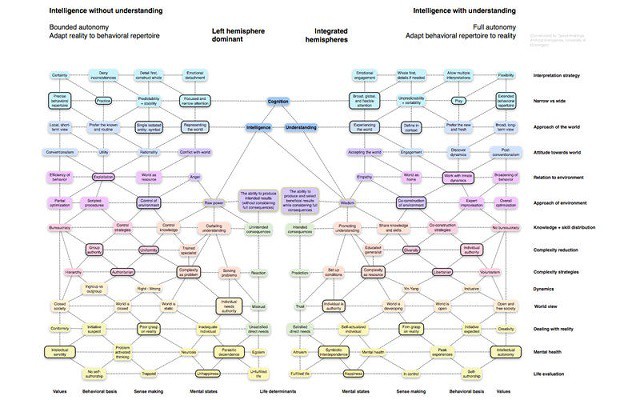Do you like creating mindmaps to brainstorm? If you like to see the relationships in your WIP via circles, solid and dotted lines, Scrivener has a function that allows you to import mindmaps into your project.
For this tutorial I used the app Scapple, developed by Literature and Latte, the same folks who created Scrivener. Like Scrivener, you can give Scapple a whirl by downloading it (go to http://www.literatureandlatte.com/scapple.php). It has the same trial period as Scrivener: 30 days of actual use.
I created a fairly simple mindmap and just jotted some facts about the writer Alvah Bessie. This is how it looks like:
I saved this as a .PNG on my desktop, and to insert it into the Editor, I could either go to File->Import->Files, and it would go under my research folder. Or I can drag the image from my desktop and insert it directly into the Editor.
Scapple according to me is the best mind mapping tool you can get for yourself and there are two main reasons for that. Firstly, as it’s evident from Scapple’s features that we talked about in details, the app makes it really easy to create mind maps. Seriously, it makes creating mind maps as easy as if you were using pen and paper. Also nicknamed “poor man’s bacon,” scrapple is a breakfast and brunch favorite in Lancaster County. This dish has both Dutch and German origins, and it’s most popular in areas of Pennsylvania with Dutch and German roots. Essentially a type of meat pudding, scrapple is usually made from finely minced ground pork meat and offal, spices. Scapple is an easy-to-use tool for getting ideas down as quickly as possible and making connections between them. It is a a freeform text editor that allows you to make notes anywhere on the page and to connect them using straight dotted lines or arrows. Scapple is a product of Literature & latte that helps you make notes anywhere on the sheet of paper and connect them using lines and arrows. The final lines can be created by dragging and dropping notes to one another.
The image will be large and if you double click it, a window will appear and you resize it.
Resizing Image in the Editor.
Once you’ve determined the size of the image hit OK.
But whar if you want to do more with the data from the MindMap? You can export it into your project as an Outline Markup (or .OPML) Document and import it into Scrivener. To do this, you’ll export your mindmap as .OPML to your desktop, and in Scrivener go to File->Import->Files. Select your OPML file and hit Import.
You’ll see in the Binder under Research that each Scapple note was imported as an RTF document that you can flesh out.
You can also save the mindmap as a plain text file and import it to the draft section of the Binder. The notes will appear as a list in the Editor with the name of the mindmap appearing in the header.
Scapple App

Scapple Definition
Mindmap as Text File.
Scapple Review
I find when I’m stuck mindmaps help me understand the direction of where I’m going with the story. If you’re like me, and need the visual inspiration, give Scapple a whirl.